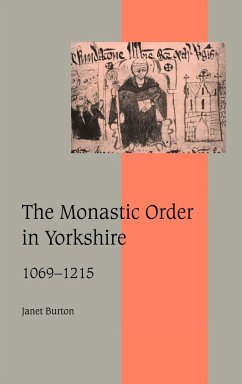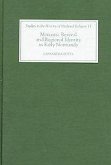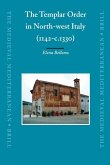This book explores the dramatic growth of the monastic order in Yorkshire from the foundation of the first post-Conquest abbey at Selby in 1069, to 1215. The first half examines the dynamics of monastic expansion, discussing the influences on both its chronological development and geographical pattern. It demonstrates that the monastic expansion owed much to the particular political and tenurial conditions which existed in the century after 1069: the establishment of Norman political ascendancy, the extension of central government under Henry I, and the civil war of the reign of King Stephen. The second part of the book explores recruitment, patronage, economy, and cultural life. Particular attention is paid to the role of women in the religious life. Nunneries, so often regarded as second-class or failed monasteries, are here shown to have had a distinctive function in society, both in terms of recruitment and of interaction with the local community.
Table of contents:
Introduction; Part I. The Dynamics of Expansion: 1. From hermitage to abbey: the Black Monks in Yorkshire; 2. Alien monks and Cluniac priories; 3. The Regular Canons; 4. The Surest Road to Heaven: the coming of the Cistercians; 5. Religious women; Part II. The Life Within and the World Outside: 6. The monastic world; 7. Founders, patrons and benefactors; 8. Monasteries and the landscape; 9. Financing the monastery: the management of economic resources; 10. Cultural influences and identities; Conclusion.
This is a study of the regional growth of monasticism between 1069 and 1215, in what was the largest county in England. It studies those who entered monastic communities, and the impact of the growth of monasticism on society, the local economy, and cultural life.
A study of the regional growth of monasticism between 1069 and 1215, in the largest county in England.
Table of contents:
Introduction; Part I. The Dynamics of Expansion: 1. From hermitage to abbey: the Black Monks in Yorkshire; 2. Alien monks and Cluniac priories; 3. The Regular Canons; 4. The Surest Road to Heaven: the coming of the Cistercians; 5. Religious women; Part II. The Life Within and the World Outside: 6. The monastic world; 7. Founders, patrons and benefactors; 8. Monasteries and the landscape; 9. Financing the monastery: the management of economic resources; 10. Cultural influences and identities; Conclusion.
This is a study of the regional growth of monasticism between 1069 and 1215, in what was the largest county in England. It studies those who entered monastic communities, and the impact of the growth of monasticism on society, the local economy, and cultural life.
A study of the regional growth of monasticism between 1069 and 1215, in the largest county in England.








